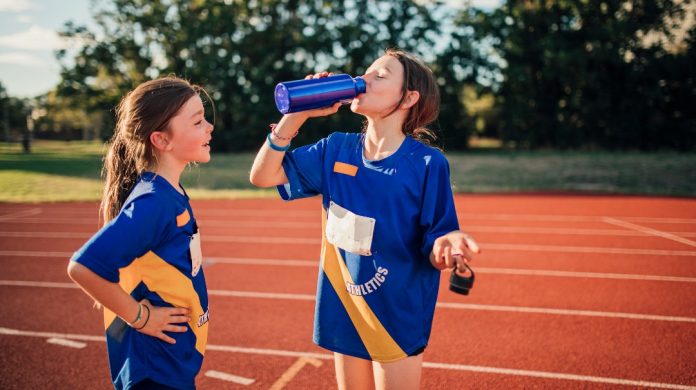It’s a scary, but true, fact: Athletes and outdoor enthusiasts have a higher risk of contracting sun-related skin cancers because of the increased amount of time spent in the sun, coupled with a lack of protective clothing and near-constant sweating.
If you’re a regular exerciser, you’re probably already familiar with a multitude of skin conditions (hello, blisters and chafing!), but the most important precaution to take year-round is protecting skin from wrinkle-inducing UV rays.
Below are five rules to follow to keep sun damage at bay, whether you’re headed outdoors for work or for play:
Tip #1: Seek shade when the sun’s rays are strongest.
Sometimes the best solution is the simplest. Prone to sunburn? Stay out of the sun’s rays when they’re at their peak (usually between 10 a.m. and 4 p.m.). Studies have also found that sweat can increase the sensitivity of skin and over-exercising can suppress the immune system, making athletes more susceptible to the damaging effects of the sun.
Tip #2: Create a barrier with clothing and accessories.
A plain old cotton t-shirt offers sun protection of only about SPF 7, and even less when it’s soaked with sweat. So go for gear from brands that offer additional defense, such as Mott 50, which combines both fashion and function in a line that is approved by The Skin Cancer Foundation and offers UPF sun protection in every garment.
Check for labels with an Ultraviolet Protection Factor (UPF) seal, which means that the fabric blocks UVA and UVB rays. Alternatively, you can also toss your favorite clothing in the laundry with SunGuard, a product that adds the equivalent of an SPF of 30 for up to 20 washes.
Tip #3: Hydrate and eat skin-soothing foods.
Skin acts as the first line of defense for our bodies, so help reinforce its effectiveness from the inside out. Supplementing your diet with vitamins (A, E and C, in particular), essential fatty acids and powerful antioxidants (such as those found in green tea) helps to promote cellular turnover, fight wrinkles and maintain that natural post-workout glow.
Tip #4: Protect those peepers.
Unflattering crow’s feet aside, sun exposure without proper eyewear (wraparound lenses treated to block both UVA and UVB rays) can also raise your risk for skin cancer on the eyelids, cataracts and macular degeneration. And on the bright side (pun intended), brown or amber lenses increase contrast, which can give athletes the added benefit of a competitive advantage.
Tip #5: Apply sunscreen liberally – and frequently.
Did you know that most people only use about 10 percent of the recommended amount of sunscreen? Use enough of the white stuff to fill a shot glass, applying it to exposed areas about 15 to 20 minutes before your workout to allow it to set in. And depending on how much you sweat, reapply every hour or two. Look for brands with broad-spectrum protection, an SPF of at least 30 and titanium dioxide or zinc oxide, which hold up better in heat and are less likely to irritate skin.
A great on-the-go option? Adventuress YouVee Sunscreen Swipes ($24), which provide skin with all the protection it needs against UVA/UVB rays. Packaged in individually-sealed finger pockets, the fragrance- and paraben-free swipes are an easy way to reapply SPF mid-workout, minus greasy residue on hands or fingers. I love to use them during long runs, especially now that I’m marathon training for hours on end. Just tuck one in your shorts pocket, and you’re good to go!








